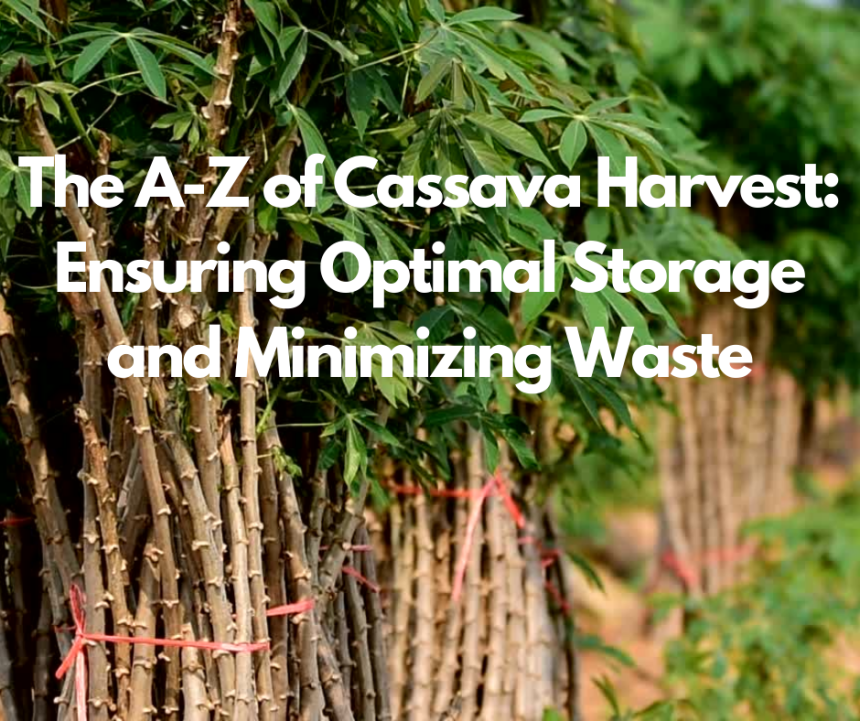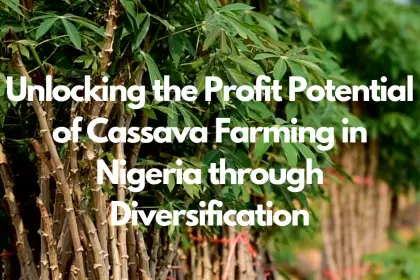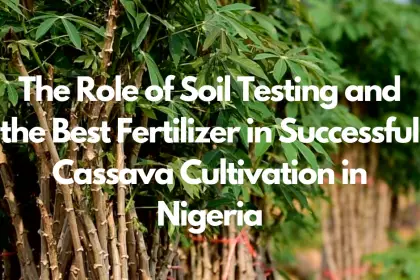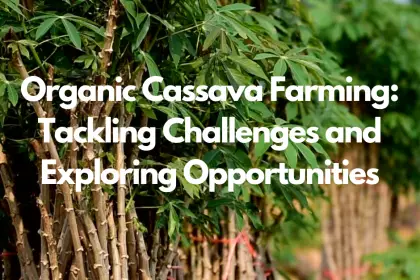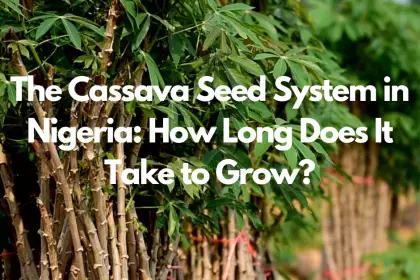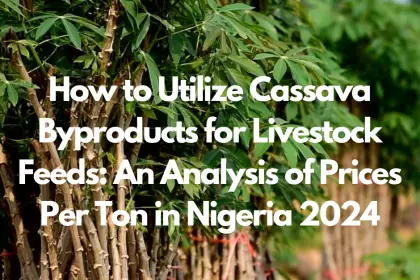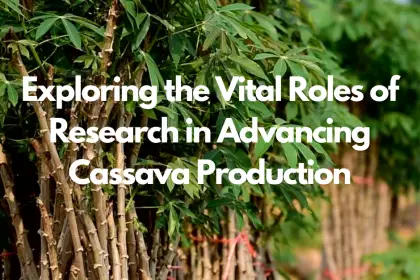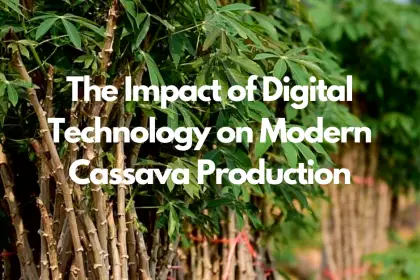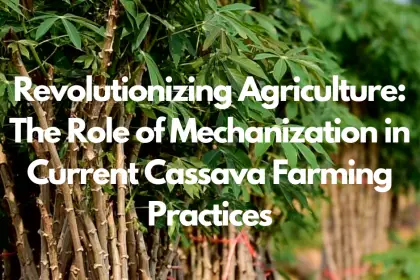Cassava stands as a cornerstone of food security in sub-Saharan Africa, pivotal for over 500 million people who count on it for their daily sustenance. As the fourth largest cassava producer in Africa, Tanzania alone churns out seven million tonnes annually, a significant share of which directly feeds its population. Besides its vital role in nutrition, cassava’s versatility is underscored by its wide range of applications, from high quality cassava flour and animal feed to industrial uses like starch production, underscoring the importance of how to cultivate and process cassava efficiently.
The A-Z of Cassava Harvest navigates through the intricacies of post-harvest challenges, highlighting innovative curing and storage solutions aimed at minimizing waste and ensuring optimal use of the harvest. It delves into techniques for harvesting cassava and how to grow cassava successfully, alongside exploring the role of technology in elevating storage standards. With insights into case studies of triumphant post-harvest handling, this article serves as a comprehensive guide for those looking to master the cultivation, processing, and industrial applications of this crucial crop.
Understanding Cassava’s Post-Harvest Challenges
Understanding the post-harvest challenges of cassava is crucial for optimizing storage and minimizing waste. These challenges can significantly impact the quality, market value, and overall utilization of cassava in various regions. Here are the key post-harvest issues:
- Post-Harvest Activities and Shelf Life:
-
- Drying and smoking can extend cassava’s shelf life by up to a year.
- Without these treatments, cassava roots have a shelf life of only 24 to 48 hours post-harvest.
- Losses and Deterioration:
-
- Physical post-harvest losses range from 3% to 30%, varying by region.
- Post-harvest physiological deterioration (PPD) starts once cassava is separated from the plant, significantly reducing root quality.
- Factors such as cassava mosaic disease (CMD), cassava brown streak disease (CBSD), and cassava bacterial blight (CBB) exacerbate yield losses.
- Processing and Consumption Patterns:
-
- Traditional processing methods are labor-intensive and time-consuming.
- In rural areas, cassava is mostly consumed fresh, while urban areas prefer processed products.
- Constraints in processing include irregular supply, high perishability, and lack of value addition tools.
Understanding these challenges is the first step towards developing strategies to address them, ensuring the cassava harvest is used optimally with minimal waste.
Key Techniques for Cassava Curing
Farmers can adopt several post-harvest practices to preserve fresh cassava’s quality and extend its shelf life, which are crucial for maximizing its market potential and reducing waste. These practices include peeling, drying, smoking, and various processing methods. Specifically, cassava curing stands out as a vital process that significantly impacts the root’s longevity and resistance to decay during storage. The steps involved in curing cassava are as follows:
- Initiate Curing Immediately After Harvest: To prevent water loss and reduce decay, the curing process should start as soon as the cassava is harvested.
- Curing Conditions:
-
- Outdoor Curing: Pile cassava in a partially shaded area, insulate with cut grasses or straw, and cover with canvas, burlap, or woven grass mats.
- Indoor Curing: Store in a protected structure at ambient temperature with high relative humidity (RH), achievable by wetting the floor or using a small electric humidifier.
- Optimal Conditions: Maintain a temperature range of 26.5°C to 29.3°C (80°F to 85°F) and RH of 90% to 95% for 4 days. Ensure the temperature does not exceed 35°C (95°F) and avoid 100% RH to prevent moisture condensation on the cassava roots.
- Storage Solutions:
-
- Avoid Washing Before Curing/Storage: Washing can lead to severe decay.
- In-Ground Storage: Store fresh cassava in the ground and harvest as needed.
- Processed Cassava Storage: After processing, store in sacks, woven baskets, on house floors, or in attics. Dried cassava chips can last up to three months, while smoked chips can last up to a year.
- Innovative Storage Methods: Storing in pits, field clamps, boxes with moist sawdust, plastic bags, or high-density polyethylene bags can extend the shelf life of cassava roots with minimal post-harvest physiological deterioration (PPD) and starch loss.
These techniques not only preserve cassava’s nutritional value but also enhance its marketability, making it imperative for farmers to familiarize themselves with these methods.
Innovative Storage Solutions for Cassava
Innovative storage solutions have emerged as pivotal in mitigating post-harvest losses of cassava, ensuring that this vital crop reaches markets in optimal condition and contributes effectively to food security. Among these solutions, the advent of hermetic storage technology, particularly Purdue Improved Cowpea Storage (PICS) bags, marks a significant advancement. These airtight bags effectively prevent the entry of insects and moisture, extending the shelf life of cassava from a mere few days to several months. Costing approximately $0.50 each, PICS bags offer an affordable option for smallholder farmers, necessitating minimal training for effective use.
- Temperature and Humidity Control:
-
- Storage at 2°C (36°F) and 90% to 95% relative humidity minimizes weight loss and root shriveling.
- Fresh cassava roots, highly perishable at normal air temperatures, benefit significantly from cool, dry environments or processing into flour, chips, or starch.
- Alternative Storage Methods:
-
- Wax coating and freezing, practices utilized in Nigeria, present viable options for prolonging cassava’s shelf life.
- Modern methods include clamp silos, crates, dips, plastic bags, and refrigeration, offering diverse strategies tailored to varying storage capacities and environmental conditions.
The integration of these innovative storage solutions, particularly the widespread adoption of PICS bags across several African countries including Nigeria, Ghana, and Malawi, has not only improved cassava storage significantly but also enhanced the livelihoods of farmers by increasing their incomes. This technology’s success with cassava has prompted its adaptation for other crops, further underscoring its potential to revolutionize agricultural storage practices.
The Role of Technology in Enhancing Cassava Storage
The integration of technology in cassava storage has significantly advanced with the use of genomic tools and resources, high-throughput genotyping platforms, and modern phenotyping approaches. These innovations contribute to a deeper understanding of cassava’s genetic diversity and facilitate the development of improved cassava varieties with enhanced storage qualities.
- Genomic Tools and Resources:
-
- Thousands of SSR markers, a chromosome-scale reference genome, and a cassava haplotype map containing millions of SNPs and indels have been developed.
- These resources aid in screening and understanding cassava’s genetic diversity, crucial for breeding programs aimed at improving storage and reducing post-harvest losses.
- High-Throughput Genotyping and Phenotyping:
-
- Platforms like the GoldenGate assay and genotyping by sequencing analyze tens of thousands of SNPs, linking genotypic information with phenotypic traits.
- Techniques such as ICheckTM for carotene content and near-infrared spectroscopy (NIRS) for predicting dry matter content and starch properties are employed to assess quality traits related to storage.
- Molecular Breeding for Improved Storage:
-
- Molecular markers and genotype-phenotype association studies identify genes and QTLs associated with traits influencing storage, such as disease resistance and root quality.
- This knowledge is leveraged in molecular breeding programs, working alongside national agricultural research systems, to develop cassava varieties that exhibit improved storage characteristics, ultimately contributing to sustainable cassava production.
Case Studies: Successful Post-Harvest Handling and Storage
In exploring successful post-harvest handling and storage of cassava, a study conducted in Momo Division, Cameroon, offers insightful data on cassava farmers’ practices and challenges. This case study highlights the critical role of improved production and processing technologies in enhancing cassava quality and yield.
- Demographics and Labor:
-
- A significant majority of cassava producers are women (76%), with most being married (71.2%) and having attained primary education (51.8%).
- The age range of 31-50 years encompasses 71.2% of producers, indicating a workforce within the active age range.
- Reliance on family labor underscores the community-based nature of cassava farming.
- Adoption of Improved Practices:
-
- High adoption rates are observed for improved varieties and planting distances, showcasing the awareness and willingness among farmers to embrace beneficial agricultural practices.
- However, the utilization of mechanized equipment, fertilizers, and pesticides remains minimal, pointing towards potential areas for development and capacity building.
- Recommendations for Enhancement:
-
- The study suggests improving social amenities, road infrastructure, access to quality farm cultivation and processing equipment, seed material, and providing capacity building for farmers as pivotal steps towards optimizing cassava production and processing.
This case study not only underscores the importance of technological advancement in cassava farming but also highlights the socio-economic characteristics of the farming community, providing a comprehensive overview of the factors influencing cassava post-harvest handling and storage.
Conclusion
Throughout this exploration of cassava post-harvest handling, storage, and innovative solutions, we’ve delved deep into the challenges that face this crucial crop and the myriad of techniques and technologies aimed at overcoming these obstacles. From understanding the delicate balance required in curing processes to embracing cutting-edge storage technology like Purdue Improved Cowpea Storage bags, we’ve uncovered strategies that not only preserve cassava’s nutritional value but also extend its shelf life significantly. The incorporation of genomic tools and molecular breeding further heralds a future where cassava’s storage capabilities are inherently enhanced, underlining the potent combination of traditional wisdom and technological innovation in safeguarding this vital food source.
The case studies and discussions presented reinforce not only the significance of cassava as a lifeline for millions but also the paramount importance of minimizing post-harvest losses through informed practices and the adoption of new technologies. As we move forward, it’s clear that the journey towards improving cassava storage and reducing waste is both a challenge and an opportunity—a collective endeavor that calls for continued research, innovation, and the sharing of knowledge. By capitalizing on these advancements and fostering a deeper understanding and application of these practices, we can ensure that cassava continues to serve as a cornerstone of food security and economic stability for communities around the globe.
FAQs
Q: What are the various ways to store cassava effectively?
A: To effectively store fresh cassava, several modern techniques can be employed, including refrigeration, deep freezing, waxing, controlled atmosphere storage, and the use of chemical treatments to preserve the roots.
Q: Can you describe the process of harvesting cassava?
A: The harvesting of cassava typically involves manual labor and is most efficiently performed when the soil is damp. The process includes cutting the main stem of the cassava plant to a length of about 30 cm to 50 cm (12 inches to 20 inches), which is then used as a lever to help extract the roots from the soil.
Q: For how long can cassava be kept in storage without significant quality loss?
A: In West Africa’s ambient temperature conditions, it is possible to store fresh cassava roots weighing 50 kg in a bag for up to eight days while maintaining minimal deterioration and starch loss.
Q: How frequently can cassava be harvested throughout the year?
A: Cassava roots can be harvested at any time between six months and two years after planting. In times of food scarcity, cassava can be harvested as needed, even if it means taking just a single plant or root at a time.

